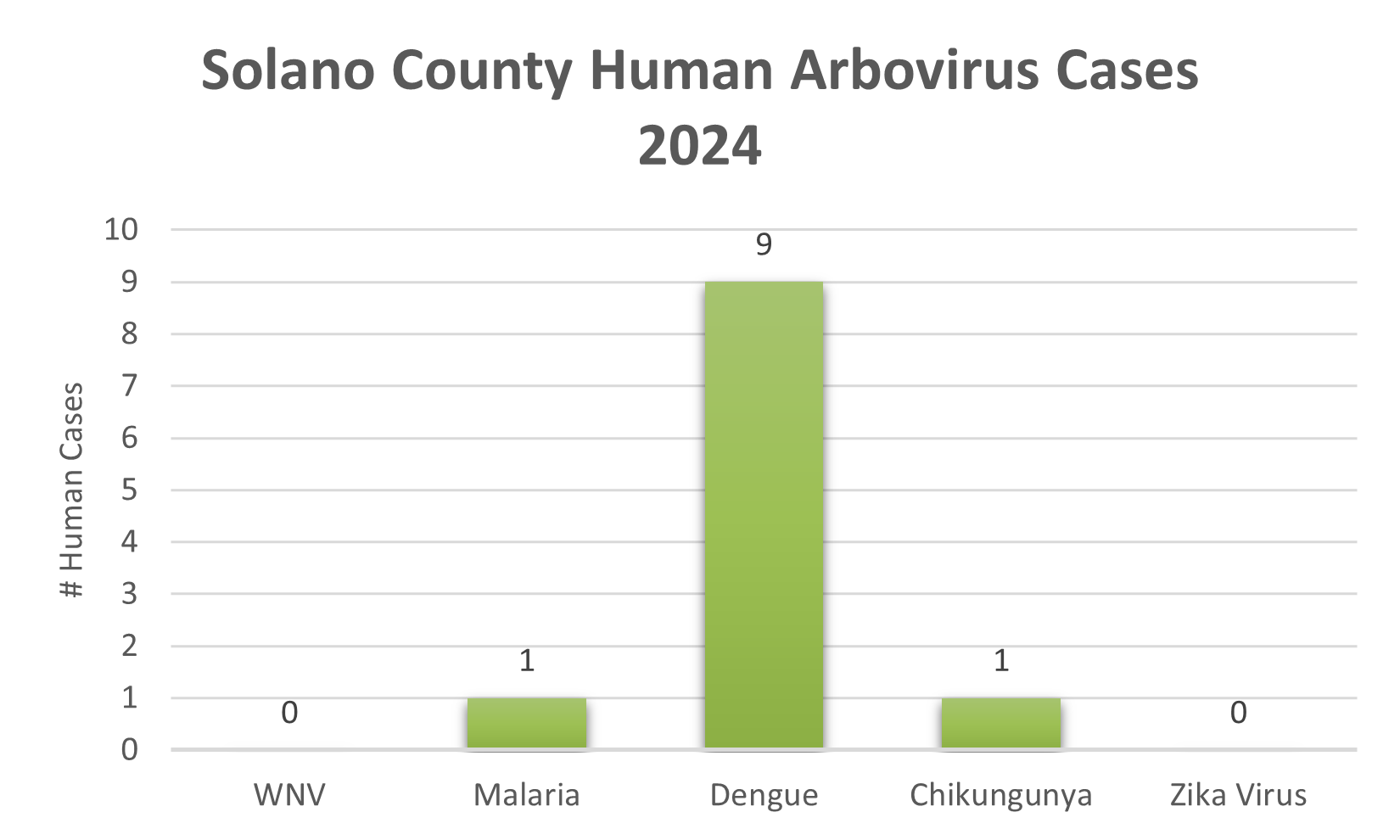Disease Surveillance
Mosquito Population Testing
A robust mosquito sampling program is very important in order to identify areas where arbovirus activity is present. In 2024 a total of 22,227 mosquitoes were sampled in the SCMAD laboratory and tested for arboviruses at the UC Davis DART laboratory. The purpose of this testing is to identify the areas within Solano County where the human population is most at risk of contracting arboviruses such as West Nile virus (WNV). When these areas are identified, mosquito control technicians respond by conducting a habitat assessment and developing/implementing an effective abatement strategy to quickly lower the mosquito population in these target areas. Solano County Public Health and the Municipalities City Manager are also notified of any positive test results. WNV is usually discovered during the months of August through September in Solano County; however, WNV positive mosquitoes have been found as early as June and as late as October. Because of this, SCMAD encourages residents and visitors of Solano County to use an EPA-approved insect repellent when spending time outdoors between summer and fall.
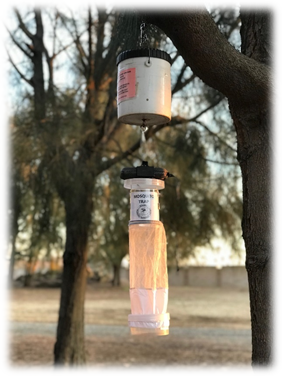
Only female mosquitoes are tested for arbovirus. Both male and female mosquitoes consume sucrose, a sugary nutrient that is produced in plants. Female mosquitoes require the additional nutrients obtained in a blood meal. The protein found in blood aids in the development of the eggs within the adult female mosquito. She is able to track down a host animal via extremely sensitive sensory organs that sense carbon dioxide and other cues. The SCMAD trapping program utilizes this method of host seeking behavior by baiting mosquito traps with dry ice, the solid form of carbon dioxide. These traps yield a high species diversity.
In Solano County both Culex pipiens and Culex tarsalis are the primary vectors of WNV, St. Louis encephalitis (SLE) and Western Equine encephalitis (WEE) viruses. Both of these species are found in high abundance in the CO2 baited traps. Because these traps are deployed overnight, the captured mosquitoes are alive upon collection. These fresh mosquitoes contain the viral RNA needed to test for WNV, SLE and WEE. In 2024 a total of 614 mosquito pools were tested, with only 13 of those pools testing positive for WNV.
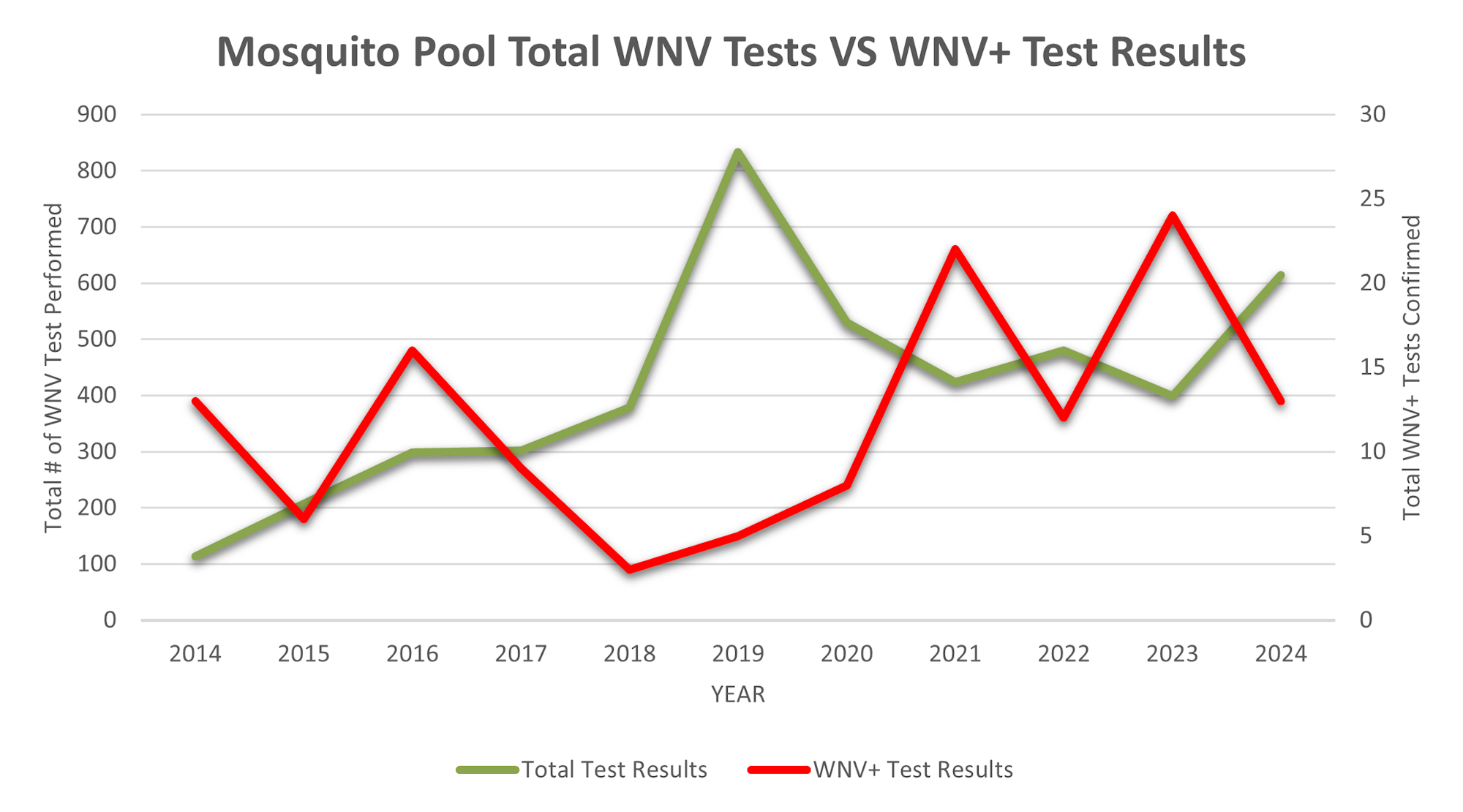
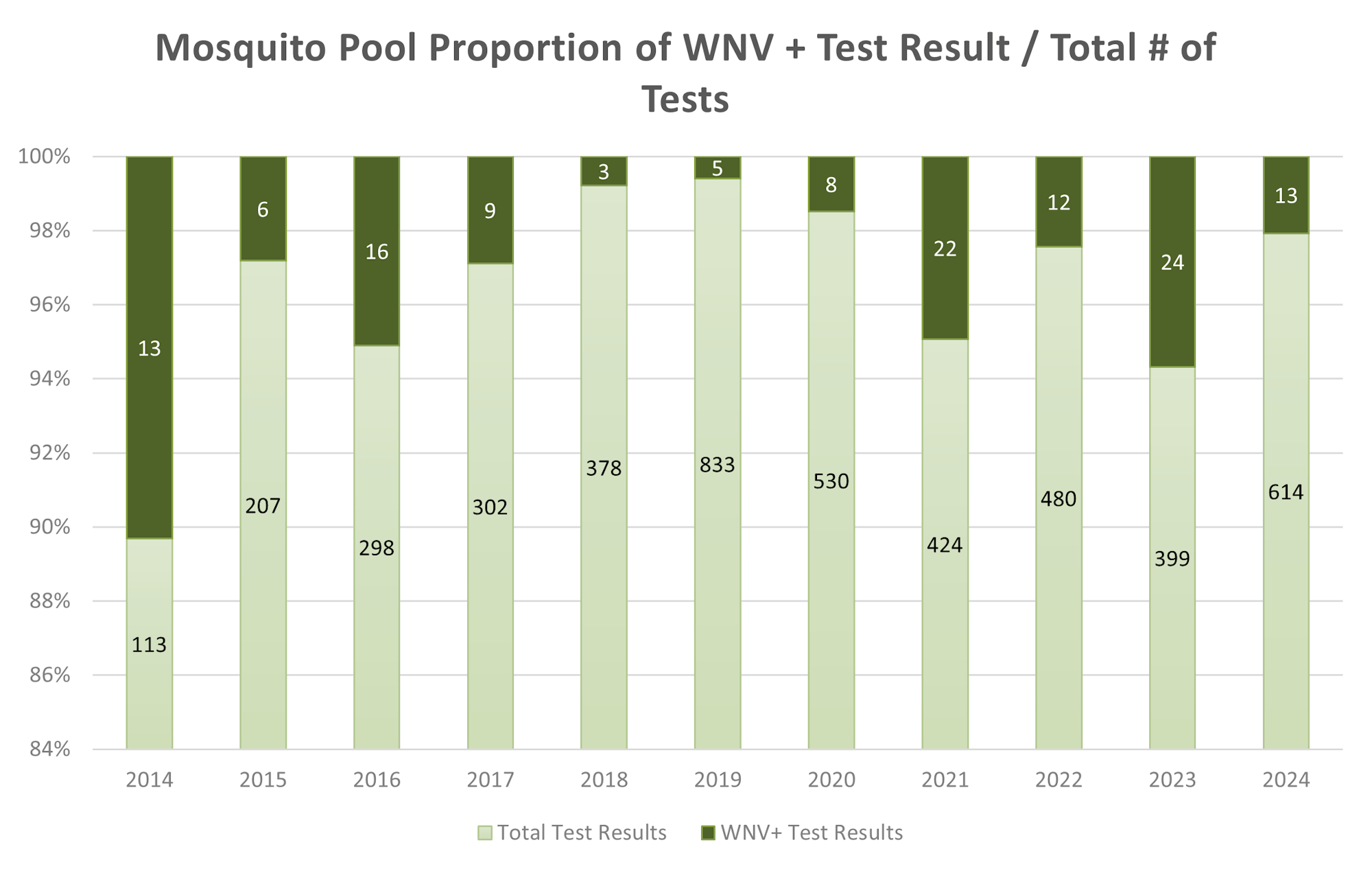
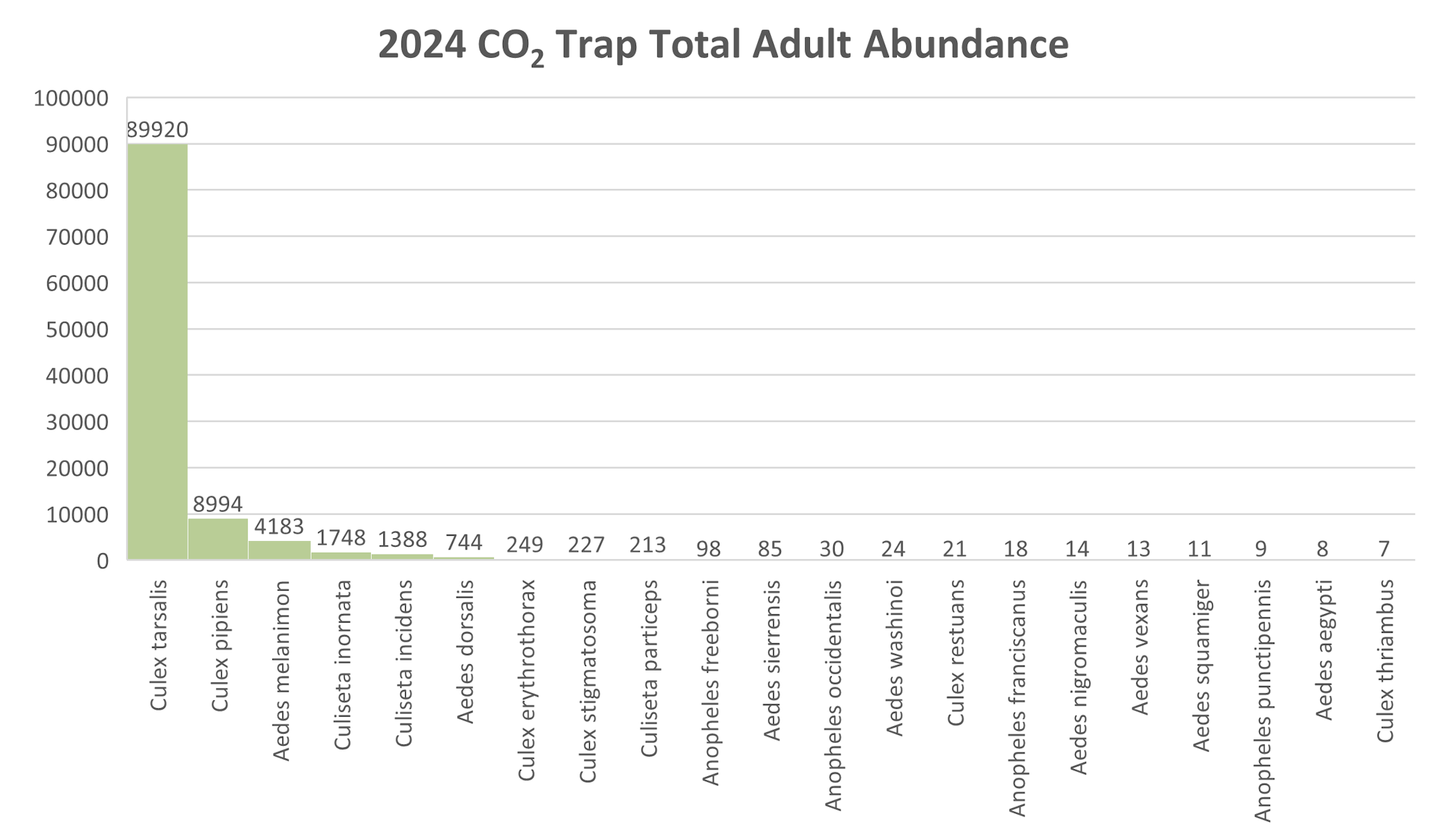

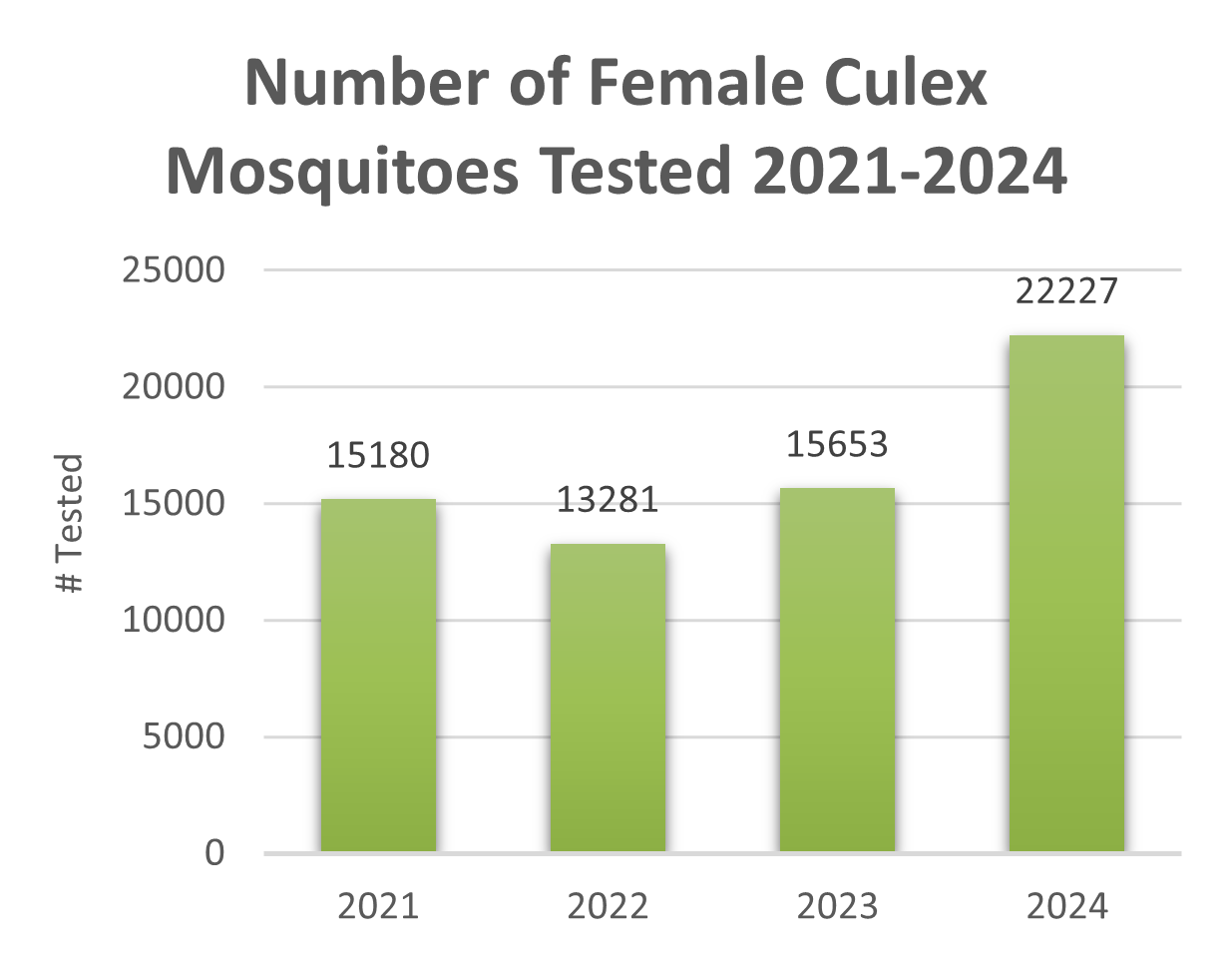

Mosquito Abundance

The SCMAD uses New Jersey Light Traps as semi-permanent monitoring stations for mosquito surveillance. The SCMAD deploys these traps for roughly 9 months a year throughout the county by partnering with the local land owners. New Jersey Light Traps use light to attract mosquitoes at night, then trap and kill them. These traps are very effective in providing the SCMAD staff with mosquito diversity and long-term comparable population data used for resource allocation decisions. The trap numbers and locations are roughly the same year to year, which allows the SCMAD to use the data from previous years to compare and identify trends and patterns.
Light traps are a very effective method in measuring the mosquito population overall because they attract a wide range of mosquito species. These traps are also useful in measuring the male adult mosquito population, too. The amount of male mosquitoes captured in a NJLT provides useful information in terms of source proximity to the trap site. Male mosquitoes in general do not fly far from their source of origin. Male mosquitoes are, in general, not strong fliers nor do they possess the need to fly great distances in the way female mosquitoes may to attain a blood meal. Interpreting both the species and sex ratio of the trapped mosquitoes will aid technicians in determining where a particular type of source may be located. In 2024, there were 21 light traps collected and reset on a weekly basis from March through November.
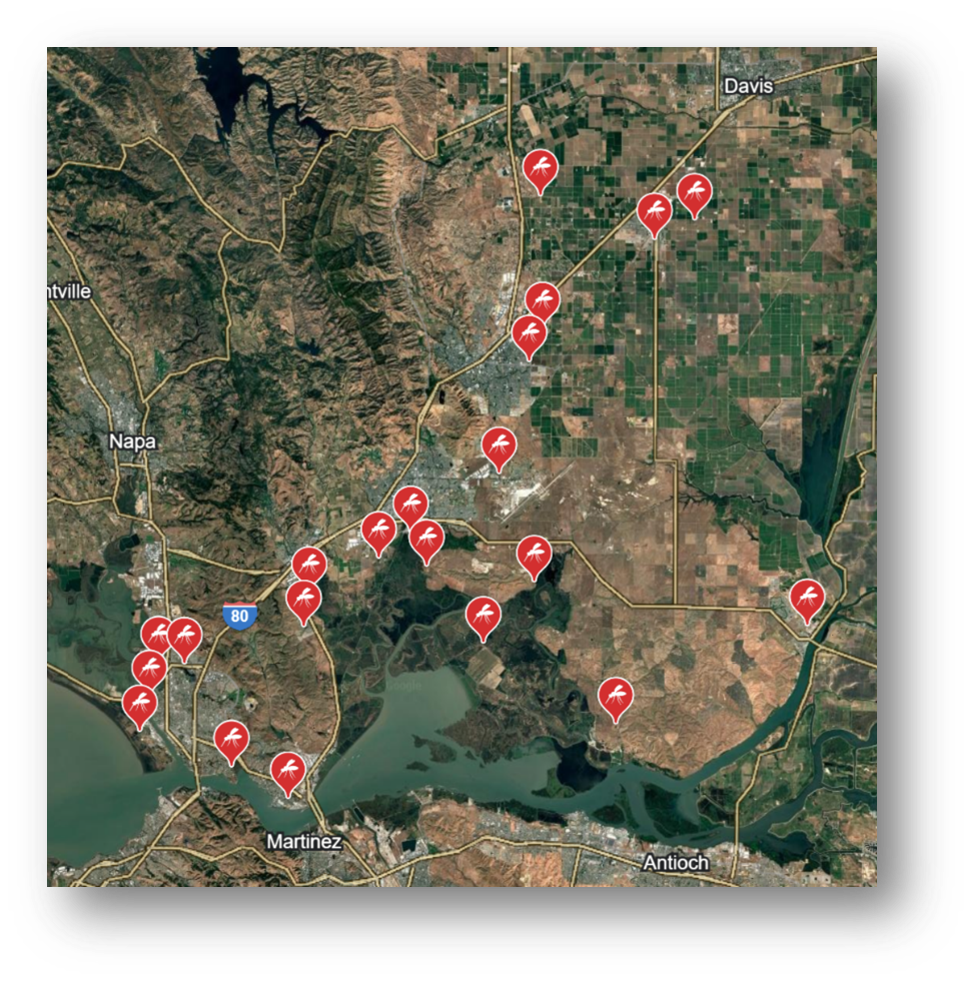
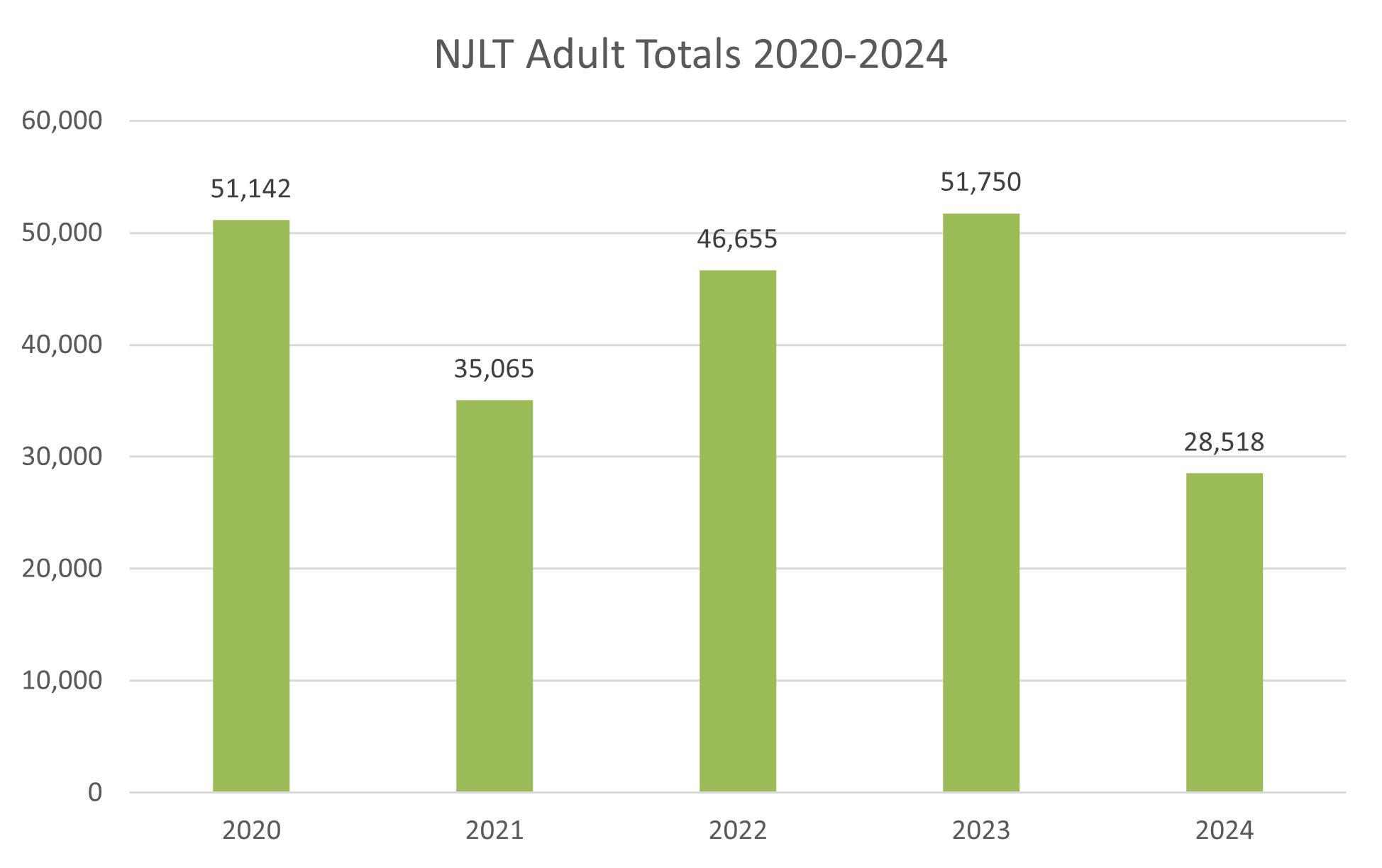
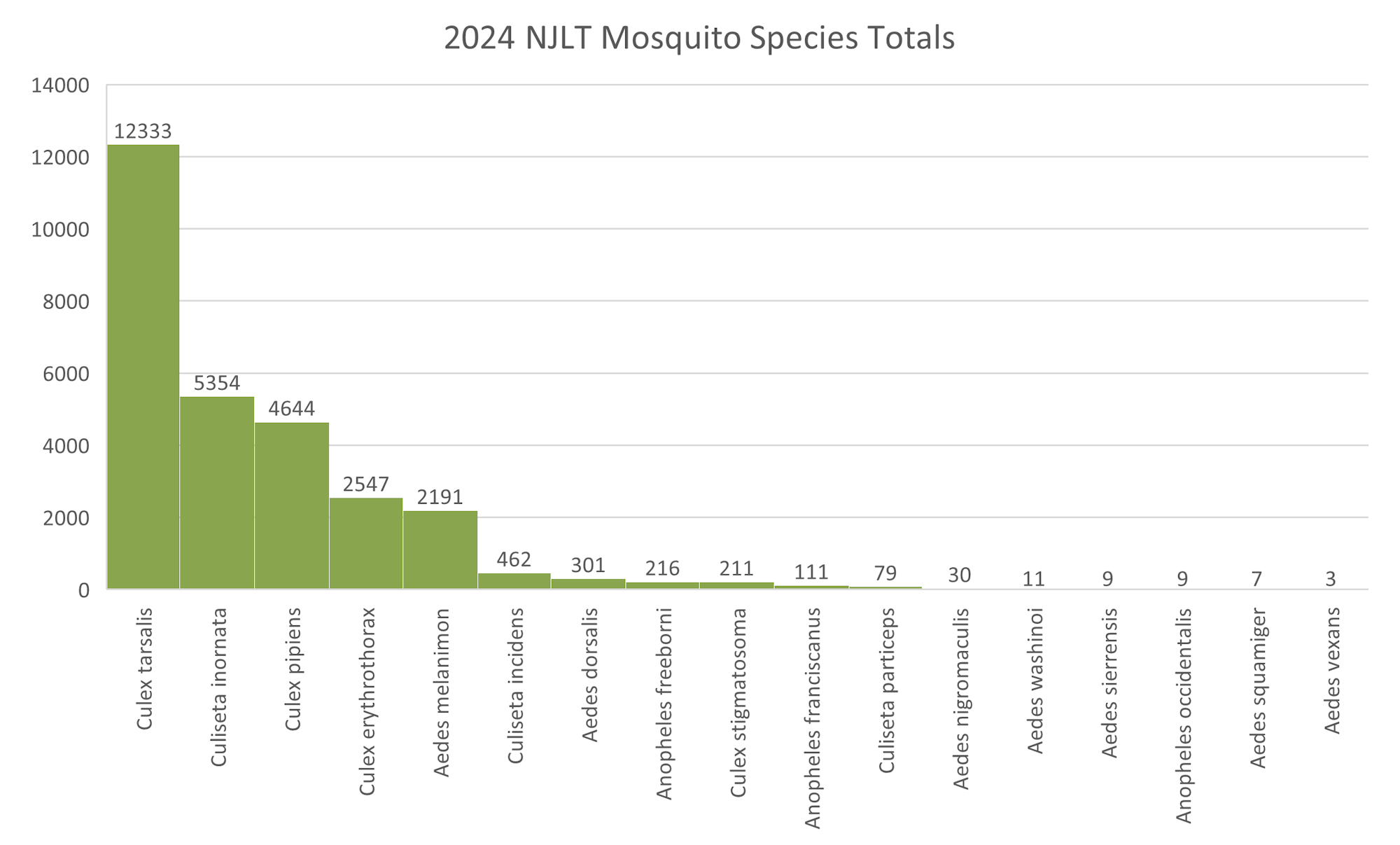
Dead Bird Testing
The Solano County Mosquito Abatement District works with the California Department of Public Health and The University of California Davis to collect and test dead birds within Solano County for arboviruses. The dead birds are reported by calling 1 (877) 968-2473 or reporting them online at http://westnile.ca.gov/report_wnv.php. Dead bird testing is an important component in our arbovirus surveillance program at the SCMAD, and it relies completely on reporting from the public. As a result, any areas in which birds tested positive for arboviruses are quickly inspected. Mosquito breeding sources are treated in order to protect Solano County residents. If you suspect a bird could have died from or been infected by West Nile virus in your area please don't hesitate - report it immediately.
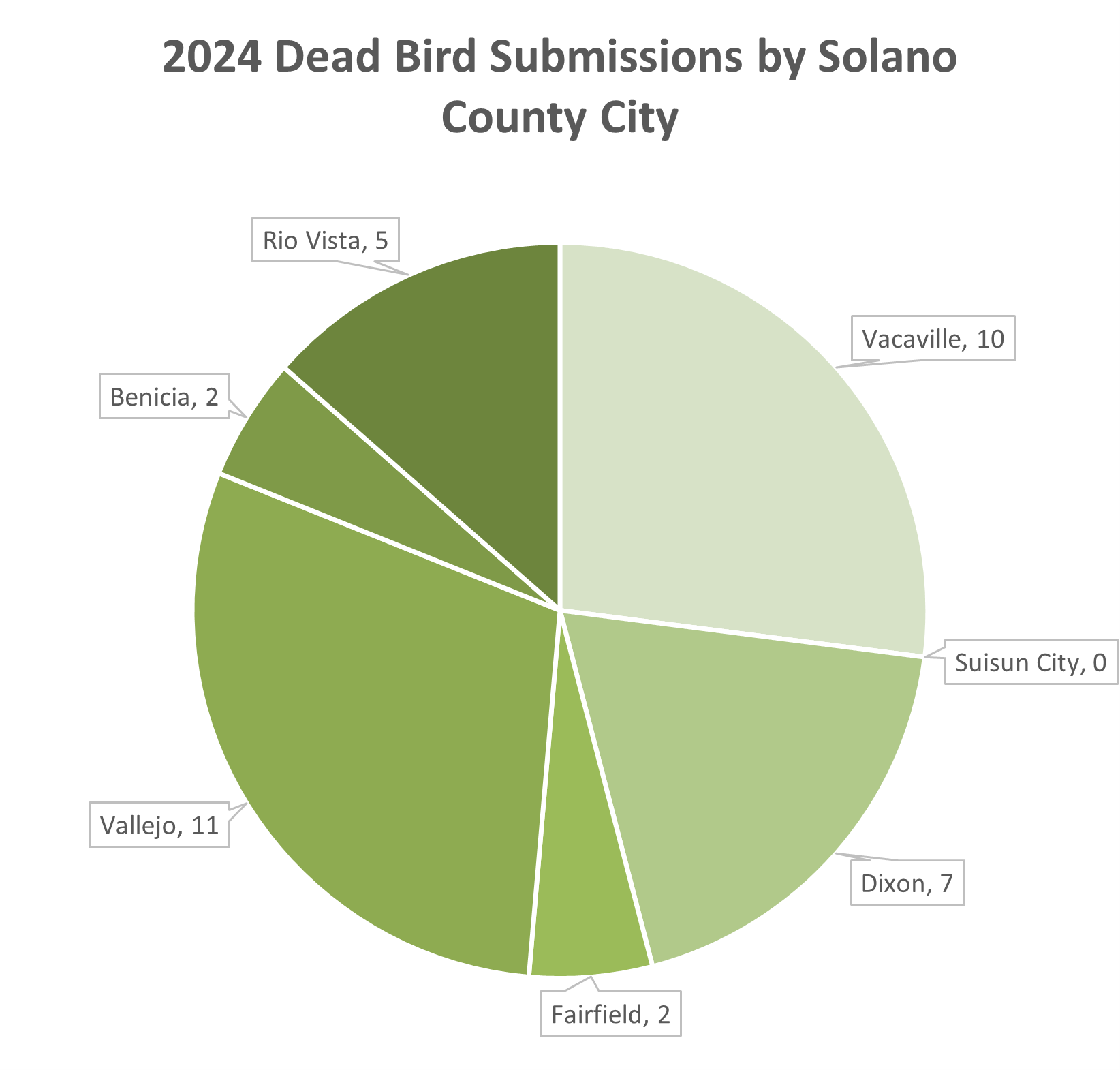
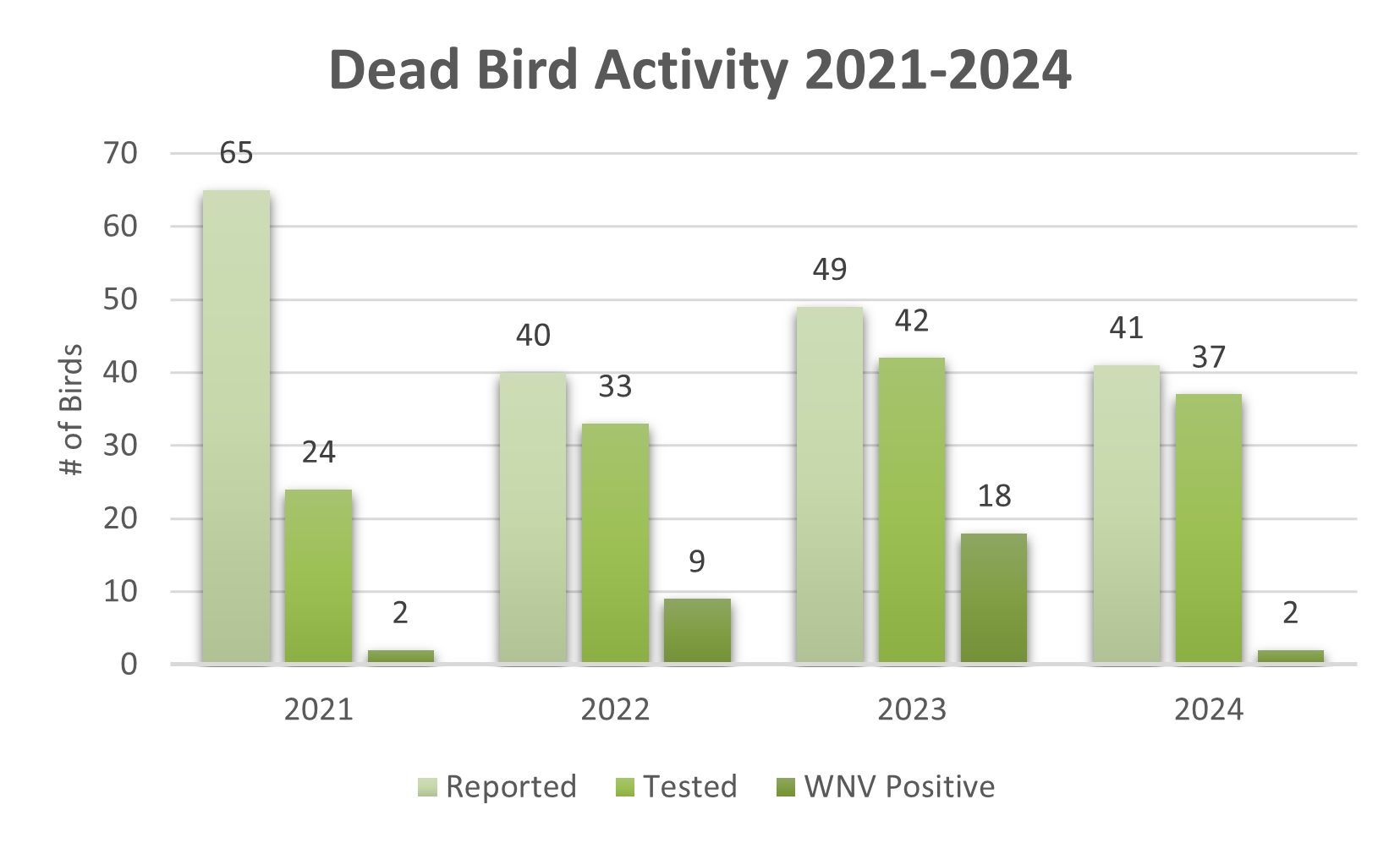
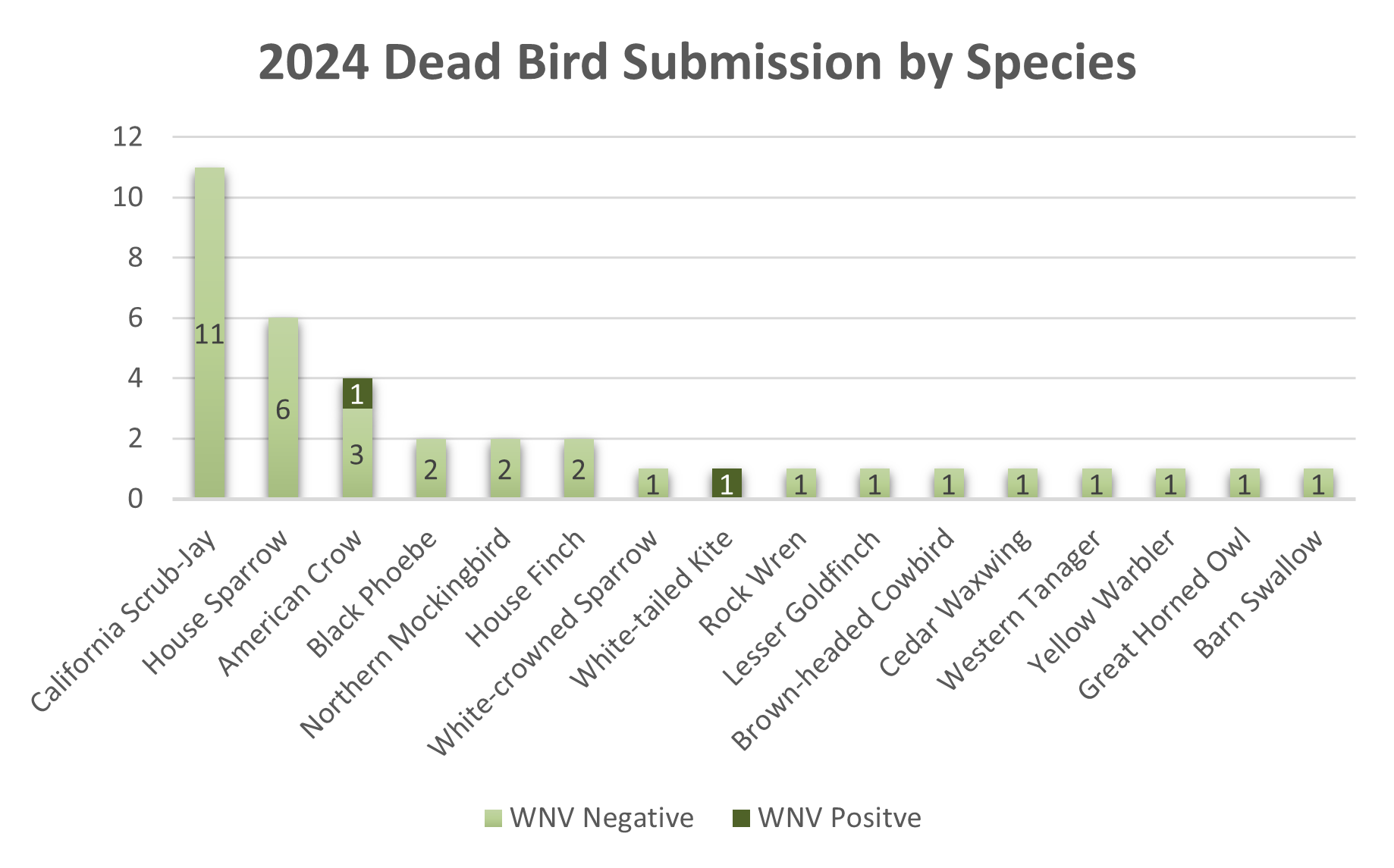
Sentinel Chicken Flocks

The District operates 3 sentinel chicken flocks, a total of 21 chickens, between the months of April and November. Blood samples were taken from the chickens biweekly and tested for the presence of arboviruses. Chickens are used as test subjects because once infected with the West Nile virus the virus can not pass on to future hosts, and do not pose a risk of vectoring arboviruses. Information from the blood samples are used to identify areas were the virus was present and to develop/implement abatement strategies.
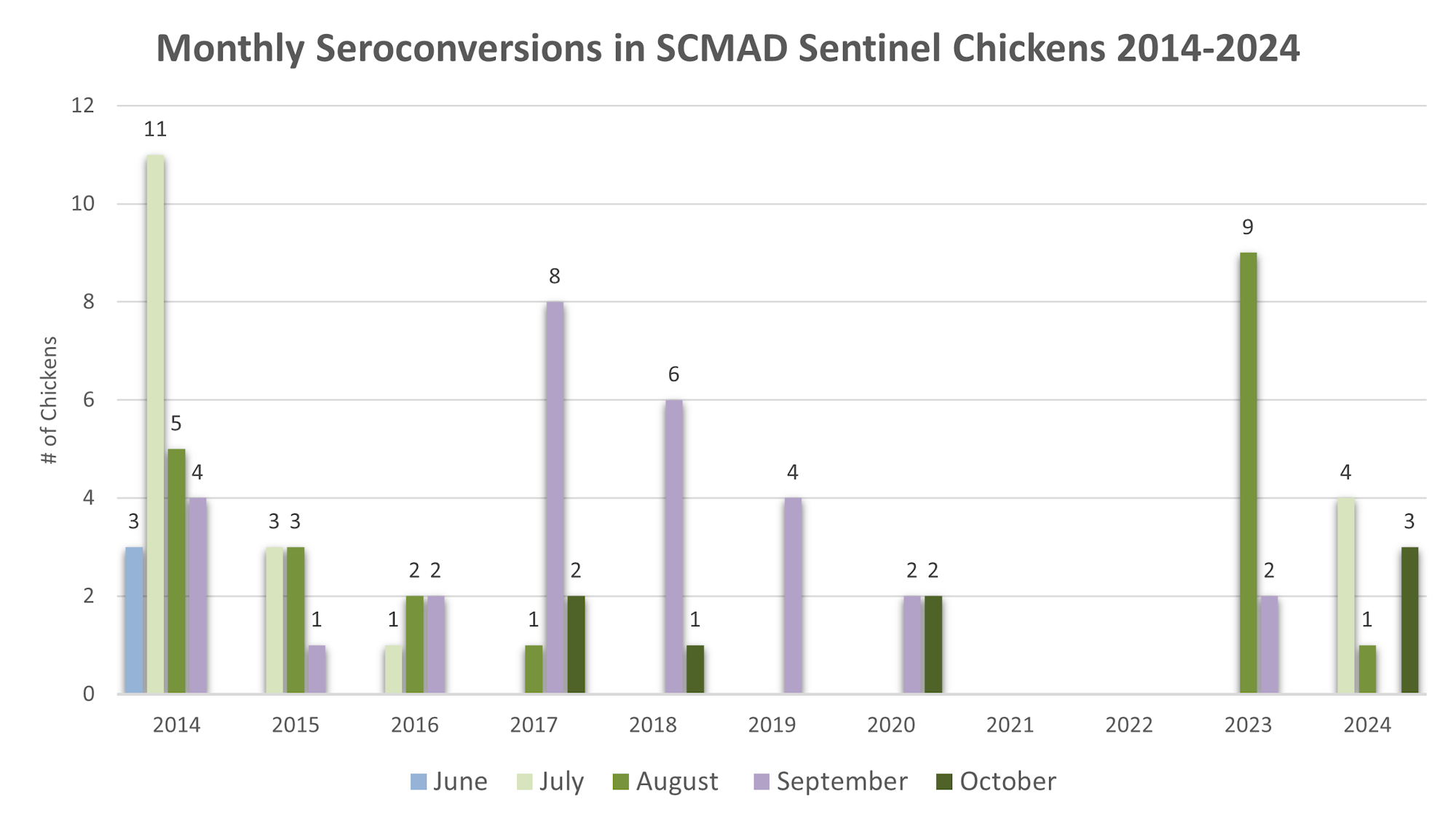
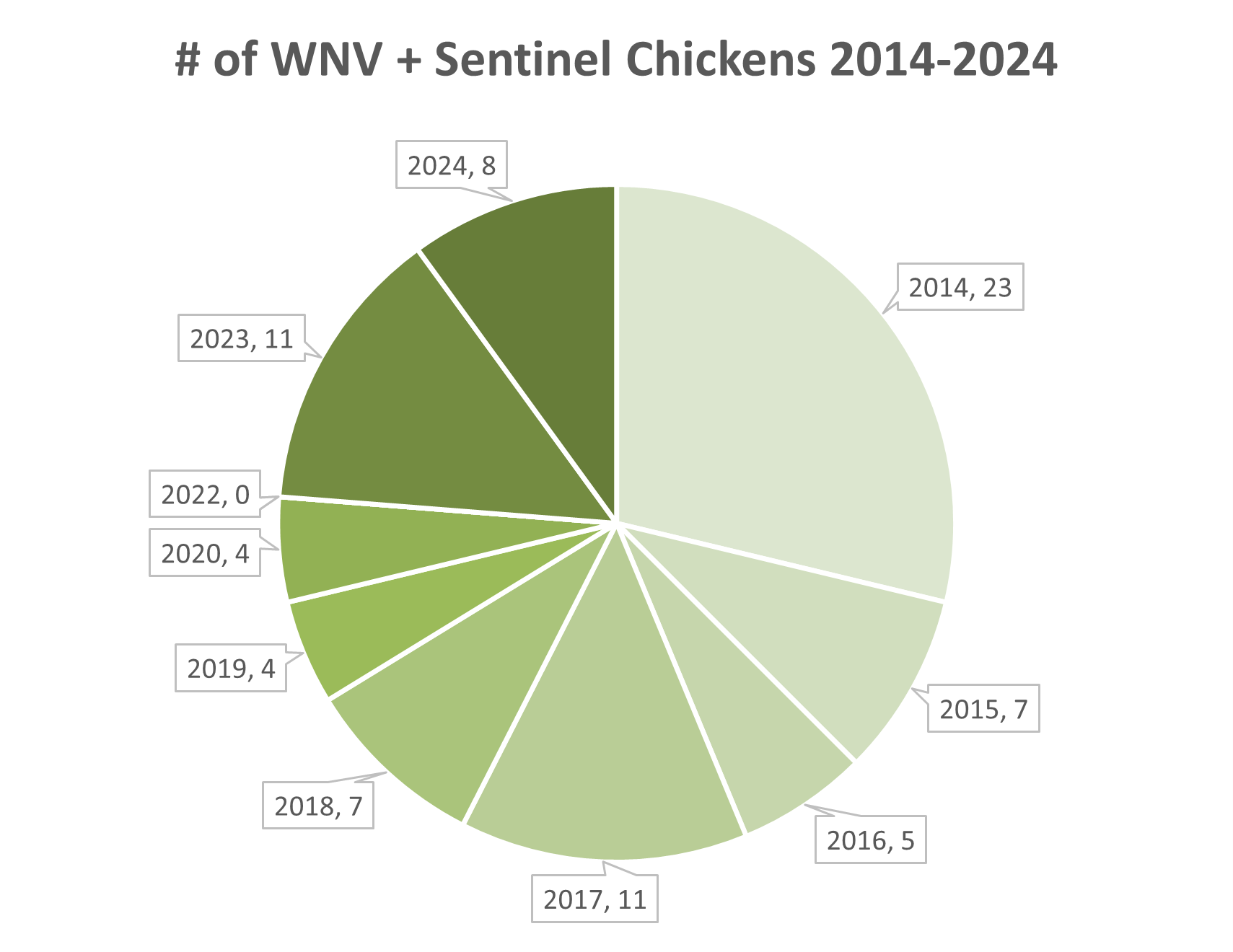
Human Arbovirus Case Response
It is our goal at the SCMAD to identify areas where arboviruses are present and reduce the risk of transmission to the human occupants of Solano County before they occur. In the event of a human infection, the occurrence is reported to the Solano County Mosquito Abatement District by the Solano County Public Health Department (SCPHD). All information that is supplied the SCMAD is provided in a manor that is compliant with all HIPAA regulations and guidelines. When possible the SCMAD will collaborate with the SCPHD to determine the likelihood of the disease transmission occurring in Solano County buy conducting trapping or habitat surveys. Mosquito abatement is conducted in areas where arboviruses are suspected in order to rapidly reduce the risk to the public. Any areas were arbovirus abatement occurs is monitored for 14-21 days to ensure a low risk to the public. In 2024 there were no confirmed human cases of arbovirus infections within Solano County.

